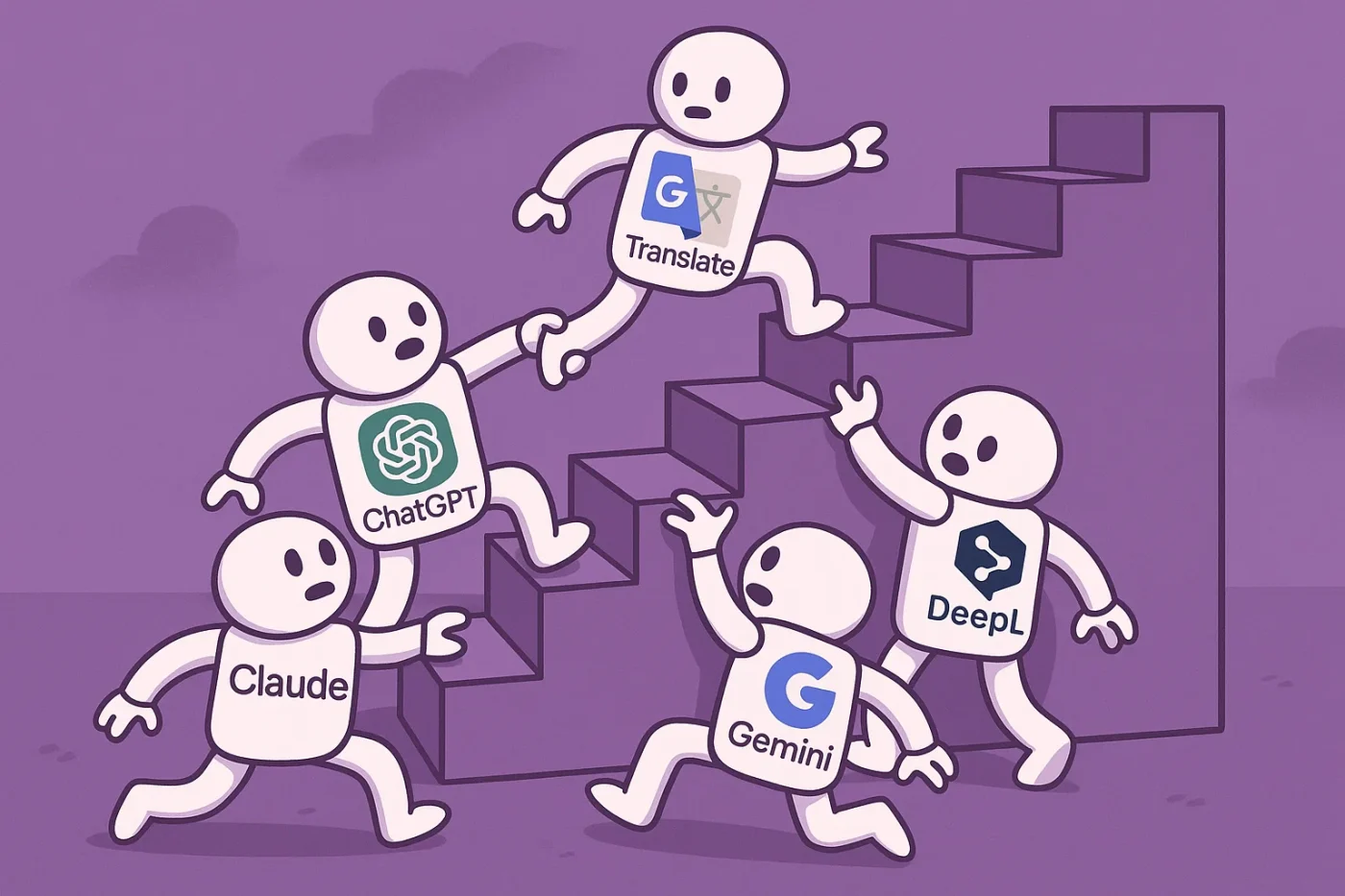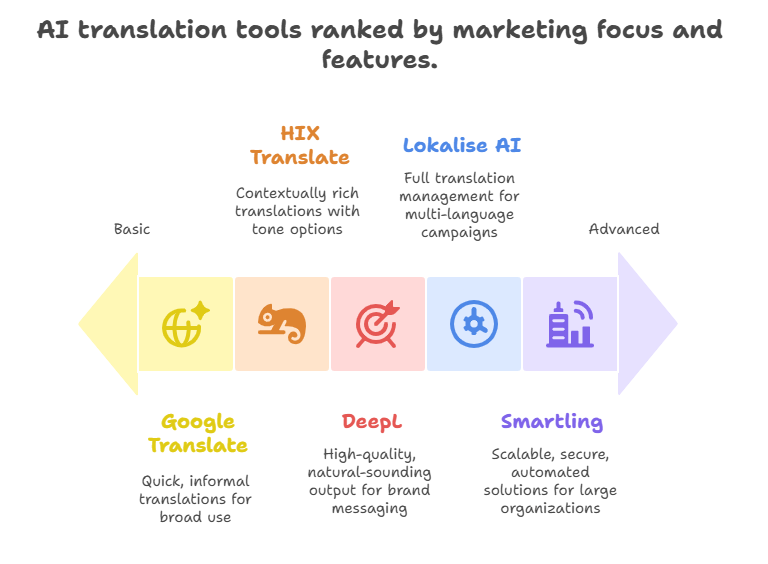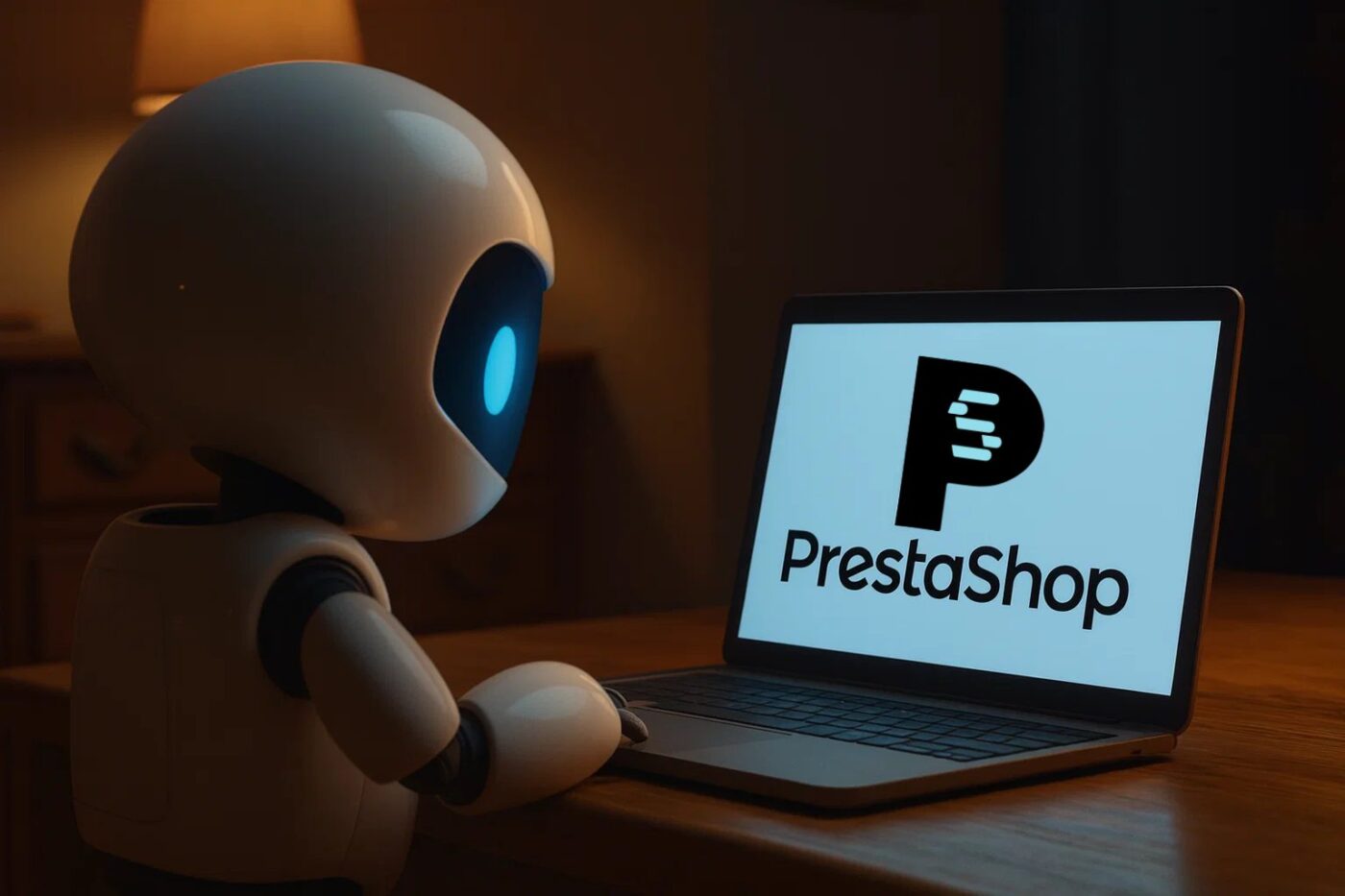What is the best AI translation tool for marketing?

Marketers started using AI a few years ago and since then, they fell in love with it. It is used in brainstorming, research, drafting content and even more. But only recently they started looking into using AI translation in marketing operations.
This can be a hidden goldmine, and that’s why we are exploring this topic today!
I. Introduction
Expanding into global markets presents a major challenge for marketing teams.
It’s not an easy task to effectively communicate brand messages across languages and cultures without losing meaning, tone, or intent.
While traditional translation methods often fall short in maintaining nuance and consistency, AI-powered translation tools are transforming how marketers scale content internationally.
In 2025, AI translation platforms have evolved far beyond generic text conversion.
Today’s leading tools are built with marketing in mind, offering context-aware translations, brand voice preservation, SEO optimization, and seamless integration with content systems.
These solutions enable faster campaign execution, higher-quality outputs, and better audience engagement. Ultimately boosting conversion and revenue.
Today, we will compare the top AI translation tools for marketing in 2025, highlighting their strengths, limitations, features, pricing, and best use cases.
You’ll also discover essential functionalities to look for, common marketing workflows, and practical advice to choose the right tool for your business.
II. Top AI Translation Tools for Marketing in 2025

1. DeepL – The Accuracy Leader in AI Translation
DeepL has established itself as the go-to solution for AI translation accuracy, making it especially valuable for marketers who prioritize high-quality, natural-sounding output.
Backed by large language models and praised in blind tests, DeepL consistently outperforms both Google Translate and ChatGPT-4 in translation quality.
Key Marketing Features
- Maintains tone, context, and intent, crucial for preserving brand messaging
- Seamless integration with CAT tools to support marketing teams’ workflows
- Custom dictionaries for brand-specific vocabulary and phrasing
- Exceptional performance in European language pairs (e.g., English, French, German)
Limitations
- Supports fewer languages than competitors
- Free version includes character limits
- Advanced features are priced at a premium
- It excels in formal settings where glossaries of terms are needed and where the structure of the translations are rigid and there’s no room for interpretation
2. Lokalise AI Translation – The Complete Marketing Solution
Lokalise AI is morethan an AI translation tool, it’s a full translation management system tailored for marketing teams managing multi-language campaigns.
It combines high translation accuracy with robust project management features, making it ideal for content-heavy marketing departments.
Marketing-Specific Advantages
- Built-in TMS for end-to-end campaign localization management
- Style guides, tone customization, glossaries, and context options for on-brand messaging
- Bulk translation across 30+ language variations
- One-click SEO optimization and content refinement
- 55 integrations with CMS platforms and marketing tools
Pricing
Starting at $0.01 per word, depending on translation volume
3. Smartling – Enterprise Marketing Powerhouse
Smartling is purpose-built for enterprise-level organizations seeking scalable, secure, and automated marketing translation solutions.
With extensive workflow automation and analytics capabilities, it streamlines international marketing operations and ensures consistency across global campaigns.
Enterprise Features
- Customizable dynamic workflows to automate tasks
- Visual context tools to reduce errors and improve translation relevance
- Real-time campaign performance analytics
- Access to a vetted network of professional linguists
- Custom models for maintaining brand voice and tone
Best Suited For
Mid-size to large enterprises managing complex, high-volume international marketing campaigns
4. Google Translate – The Accessible Option
Google Translate remains the most widely used AI translation tool due to its accessibility and support for over 200 languages.
While not built specifically for marketing, its integration with Google’s ecosystem and ease of use make it a convenient option for quick, informal translation needs.
Marketing Applications
- Broad language support, including low-resource and emerging markets
- Maintains document formatting during translation
- AutoML support for custom marketing model training
- Mobile-friendly for on-the-go use
Limitations
- Inconsistent translation accuracy for marketing-specific content
- Limited ability to preserve brand tone and contextual nuance
- Lacks customization for tone of voice and campaign-specific terminology
5. HIX Translate – AI-Powered Versatility
HIX Translate leverages GPT-3.5 and GPT-4 technologies to deliver contextually rich translations in 109 languages.
It’s built for flexibility, allowing users to tailor tone and style to fit a variety of marketing scenarios, from formal whitepapers to casual social posts.
Marketing Benefits
- Multiple tone and context options for different campaign styles
- Covers 109 languages with a focus on contextual fluency
- Intuitive user interface and dashboard
- Well-suited for content creators and marketers needing versatility
Pricing
Free tier available; paid plans start at $4.99/month
III. Essential Features for Marketing Translation Tools
When choosing an AI translation tool for marketing, functionality goes beyond basic translation accuracy. Marketers need tools that preserve brand identity, enhance efficiency, and improve campaign performance across regions.
The following features are critical for ensuring that translated content resonates globally while remaining consistent and strategic.
1. Translation Memory and Consistency
Why It Matters:
Translation Memory (TM) stores previously translated content and automatically suggests it when similar text appears again. This ensures consistent use of key phrases and brand messaging across campaigns, vital for maintaining trust and recognition in multilingual markets.
Marketing Impact:
- Uniform brand tone across all regions
- Faster content turnaround by reusing validated phrases
- Reduces human post-editing time and translation costs
2. Glossary Management
Why It Matters:
A centralized glossary maintains standardized translations of brand-specific terms, product names, taglines, and preferred phrases. This ensures all content reflects your brand’s unique identity, regardless of language.
Marketing Impact:
- Reinforces brand consistency
- Prevents misinterpretations of key marketing terminology
- Simplifies onboarding for translators and reviewers
3. Integration Capabilities
Why It Matters:
Modern marketing teams rely on multiple platforms, CMSs, email tools, social media schedulers, and automation platforms. A translation tool that integrates with these systems allows for streamlined content flow and centralized campaign management.
Marketing Impact:
- Automates publishing of multilingual content
- Reduces copy-paste errors and formatting issues
- Supports real-time collaboration between teams
4. SEO Optimization
Why It Matters:
Multilingual SEO is crucial for discoverability in global markets. AI tools that support keyword localization, meta translation, and URL structuring can dramatically improve organic search visibility in different languages.
Marketing Impact:
- Boosts search rankings across target regions
- Increases traffic from local audiences
- Supports global content strategies with region-specific optimization
IV. Marketing Translation Best Practices
Effective use of AI translation tools goes hand-in-hand with smart strategy.
To get the best results from your tool of choice, your marketing team must apply localization best practices, optimize translation workflows, and continuously track performance for improvement.
1. Content Localization vs. Translation
What Localization Means:
Localization is the process of adapting content not just linguistically, but also culturally and contextually for a specific market. It ensures your message feels native to each audience.
Key Components of Successful Localization:
- Adjusting idioms, cultural references, and humor
- Modifying visuals, currencies, and measurements
- Tailoring tone of voice to local audience preferences
- Adapting layouts and formats for right-to-left or long-form text
Marketing Example:
Translating a U.S.-based campaign slogan for a Japanese audience might involve adjusting the tone to be more formal, while also changing imagery to better match cultural expectations.
2. Workflow Optimization
Steps for Efficient Translation Workflows:
- Step 1: Create clear content briefs with campaign objectives and audience details
- Step 2: Use translation memory and glossaries to maintain brand consistency
- Step 3: Automate task assignment using a TMS or project management tool
- Step 4: Implement human quality checks to review machine translations
- Step 5: Track translation performance via analytics dashboards
3. ROI Optimization
Cost-Efficiency Strategies:
- Use AI-assisted translation for bulk content; reserve human editors for high-visibility campaigns
- Leverage translation memory to reduce repeated translation costs over time
- Choose tools with pricing models that scale with volume
Performance Tracking and Improvement:
- Run A/B tests on translated CTAs and headlines
- Monitor engagement and conversion metrics by region
- Adjust localization efforts based on performance insights
Combining the right AI translation tool with best practices in localization and workflow management can significantly boost your global marketing ROI, both in efficiency and effectiveness.
But you must use the right tool for the right task. Some AI translation marketing tools are too broad to be use by everybody successfully and there’s a lot of fluff sometimes.
An example of an industry specific tool is Ovesio, it has been built for Ecommerce Stores specifically
V. Cost Considerations
Selecting the right AI translation tool involves not just evaluating features and quality, but also understanding how each option fits your marketing budget.
In 2025, the cost difference between professional human translation services and AI-powered tools remains significant, making AI a compelling choice for many teams.
Average Market Pricing
- Professional Human Translation:
Typically ranges from $0.08 to $0.25 per word, depending on the language pair and complexity. Subject-matter expertise or marketing specialization can raise costs by 50% to 100%. - AI-Powered Translation Tools:
Offer scalable, cost-efficient alternatives with rates as low as $0.001 per word (in the case of Ovesiobut keep in mind it’s for Ecommerce specifically).
Cost Comparison of Featured Tools
| Tool | Pricing Model | Estimated Cost Range |
|---|---|---|
| Lokalise AI | Per-word pricing based on volume | From $0.01 per word |
| HIX Translate | Subscription-based model | From $4.99/month |
| Smartling | Custom enterprise pricing | Varies, typically higher-end |
| DeepL Pro | Character-based pricing | Varies by usage; higher tiers offer API access |
| Google Translate | Free for basic use, enterprise APIs available | Free – Custom pricing for AutoML |
| Ovesio | Per translated word based on volume | (about $0.001 per word) |
Key Insight:
For ongoing, large-scale marketing campaigns, AI translation tools can slash costs by 50–90% compared to traditional services, especially when leveraging translation memory and bulk automation.
In industries like Ecommerce where you also take into account the fact that AI translation tools like Ovesio takes care of your SEO, and even writes product description, you save even more.
VI. Making the Right Choice
The best AI translation tool for your marketing team depends on your goals, scale, and content strategy. Below are tailored recommendations based on common marketing use cases:
For Maximum Accuracy: DeepL
If your brand’s voice and tone must be perfectly preserved, DeepL is the go-to choice. It outperforms both Google Translate and GPT-4 in blind tests and requires significantly fewer edits, saving time and ensuring quality in high-stakes campaigns like product launches or PR releases.
Ideal For:
- Brands with premium positioning
- Copy-heavy assets like blog posts and ad copy
- European language pairs
For Seamless Marketing Workflow Integration: Lokalise AI
Lokalise AI offers a true marketing-specific ecosystem, combining translation, workflow management, SEO features, and integrations with over 50 marketing tools.
It’s a powerful choice for managing end-to-end localization projects across teams.
Ideal For:
- Marketing departments with frequent campaign launches
- Teams that rely on CMSs, design tools, and automation platforms
- Content creators who want to preserve brand voice with glossaries and tone control
For Enterprise Scale: Smartling
Smartling is built for global organizations needing scalable, secure, and automated translation management.
With enterprise-grade workflows, analytics, and professional linguist networks, it’s best suited for large companies with complex localization needs.
Ideal For:
- Global enterprises with multiple product lines
- Teams handling high translation volumes across regions
- Businesses requiring audit trails, custom workflows, and security compliance
For Budget-Conscious Teams: Google Translate or HIX Translate
If you need fast, low-cost translation with broad language support, Google Translate remains a viable choice, especially when paired with AutoML for customization.
HIX Translate offers a more nuanced alternative with tone and context flexibility, all at a very low monthly price.
Ideal For:
- Small businesses or startups entering new markets
- Teams needing fast turnarounds for internal or lower-risk content
- Translating multilingual social media or support content
For Ecommerce: Ovesio
If your brand’s voice and tone must be perfectly preserved, DeepL is the go-to choice. It outperforms both Google Translate and GPT-4 in blind tests and requires significantly fewer edits, saving time and ensuring quality in high-stakes campaigns like product launches or PR releases.
Ideal For:
- Ecommerce Stores scaling into global markets
- Stores with feeds containing tens of thousands of products
- Stores that sometimes have missing product descriptions (because it write it for you)
VII. Conclusion
As global competition intensifies, effective multilingual marketing is no longer optional, it’s a core driver of growth.
Choosing the right AI translation tool can make or break your ability to connect authentically with international audiences, preserve brand voice, and execute campaigns at scale.
65% of online shoppers prefer content in their language, even if it’s poor quality, so this move is a no-brainer.
But there’s no one-size-fits-all answer. The best platform isn’t just the one with the most features, it’s the one that aligns with your marketing strategy, offers the capabilities you truly need, and fits your team’s workflow and budget.
FAQ: AI Translation Tools for Marketing
1. What makes an AI translation tool “marketing-friendly”?
Marketing-friendly translation tools go beyond word-for-word conversion.
They preserve brand tone, support visual/contextual editing, allow for glossary management, integrate with marketing platforms, and often include SEO optimization features for digital campaigns.
2. Is AI translation good enough for marketing content?
Yes, with the right tool and workflow. Advanced platforms like DeepL and Lokalise AI produce translations that require fewer human edits, making them viable for many types of marketing content.
However, high-impact messaging still benefits from human oversight for localization and cultural nuance.
3. How do AI translation tools handle brand-specific terminology?
Most professional-grade tools include custom glossaries and translation memory features.
These ensure consistent use of branded terms and preferred phrasing across all languages and campaigns.
4. Can AI tools help improve multilingual SEO?
Absolutely. Tools like Lokalise AI and Smartling offer features like keyword localization, SEO metadata translation, and multilingual sitemap support to help boost visibility in international search engines.
5. What’s the best AI translation tool for small marketing teams with tight budgets?
For budget-conscious teams, HIX Translate and Google Translate offer affordable (or free) options.
While they may lack advanced features, they can be effective for basic needs or early-stage global marketing efforts, especially when paired with manual QA.





